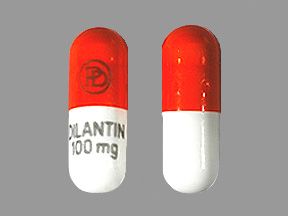Top Class Actions’s website and social media posts use affiliate links. If you make a purchase using such links, we may receive a commission, but it will not result in any additional charges to you. Please review our Affiliate Link Disclosure for more information.
A Texas man suing the manufacturer of the generic form of the anti-seizure drug Dilantin is one of at least 100 people who have filed Dilantin lawsuits claiming that it caused serious and sometimes fatal skin reactions known as Stevens-Johnson Syndrome (SJS) and Toxic Epidermal Necrolysis (TEN).
Plaintiff Juan Morales alleges he developed Stevens-Johnson Syndrome within a month of taking the generic Dilantin (phenytoin) in spring 2008. A severe rash covered 80 percent of his body, requiring that he be hospitalized at Corpus Christi (Texas) Medical Center.
When Morales first sought treatment the rash had not yet began to blister and his doctor gave him a prescription for rash cream and sent him home, according to his Dilantin SJS lawsuit.
Later that year, the U.S. Food and Drug Administration (FDA) issued a warning that Dilantin (phenytoin) and Phenytek – Dilantin’s bioequivalent – carried a risk of Stevens-Johnson Syndrome.
Morales’ Dilantin lawsuit states that he would not have taken the medication had he known of its SJS risk. He accuses Mylan Pharmaceuticals of failure to warn and of selling a defective product. The Dilantin lawsuit — which seeks punitive and compensatory damages — names five other “John Does” as defendants.
In 2010, Pfizer, the manufacturer of Dilantin, settled for $3.78 million with the family of a nine-year-old New York girl who died in 2004 after suffering drug-induced Toxic Epidermal Necrolysis, a severe form of Stevens-Johnson Syndrome, after taking Dilantin and another Pfizer drug, Flagyl, an anti-fungal medication. According to the Dilantin SJS lawsuit, the girl’s skin peeled off her body, causing her death. When the skin blisters and later peels off the body in large swaths, sepsis (blood infection) and cellulitis (secondary skin infection) become much more likely.
Flu-like symptoms precipitate Stevens-Johnson Syndrome, which are then followed by a potentially life-threatening skin disease manifested by a rash similar to a burn, open sores and skin peeling. Other signs of the disease are a purplish rash that spreads, painful blisters of the mucus membranes, blisters on the eyes, nose, mouth, and genitals, sloughing off of skin in large patches, joint and muscle pain and a burning sensation all over the body.
A study of 15 burn centers across the United States found that Dilantin side effects were believed to be the cause of more than 20 percent of Toxic Epidermal Necrolysis cases. Of those 20 percent, one-quarter died.
TEN is characterized by blisters that meld into one another to cover 30 percent or more a substantial portion of the body as well as sloughing off of the skin. The exposed under layer of the skin, known as the dermis, is red and suggests severe scalding.
Between 5 percent and 15 percent of SJS patients die from the side effects, while up to 40 percent of TEN patients succumb to the disease. Survivors face a host of other medical problems including a secondary skin infection (cellulitis), sepsis, blindness, internal organ damage and permanent skin damage.
There is no cure for either disease.
In general, Dilantin lawsuits are filed individually by each plaintiff and are not class actions.
Do YOU have a legal claim? Fill out the form on this page now for a free, immediate, and confidential case evaluation. The attorneys who work with Top Class Actions will contact you if you qualify to let you know if an individual lawsuit or class action lawsuit is best for you. Hurry — statutes of limitations may apply.
ATTORNEY ADVERTISING
Top Class Actions is a Proud Member of the American Bar Association
LEGAL INFORMATION IS NOT LEGAL ADVICE
Top Class Actions Legal Statement
©2008 – 2024 Top Class Actions® LLC
Various Trademarks held by their respective owners
This website is not intended for viewing or usage by European Union citizens.
Get Help – It’s Free
Help for Victims of Stevens Johnson Syndrome
If you or a loved one were diagnosed with Stevens Johnson Syndrome (SJS) or toxic epidermal necrolysis (TEN) after taking a prescribed or over-the-counter medication, you may be eligible to take legal action against the drug’s manufacturer. Filing an SJS lawsuit or class action lawsuit may help you obtain compensation for medical bills, pain and suffering, and other damages. Obtain a free and confidential review of your case by filling out the form below.
An attorney will contact you if you qualify to discuss the details of your potential case at no charge to you.
Oops! We could not locate your form.













